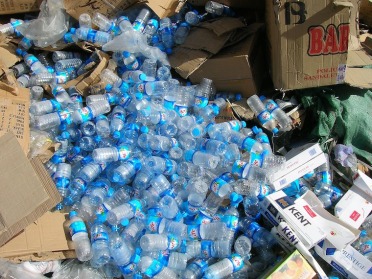Ins and Outs of Water Safety
During the summer months, the topic of water safety comes up as the warm weather attracts people of all ages to pools, lakes and the beach. Whether indoors or enjoying water sports outside, being “water competent” is key to having fun without being at risk of drowning. According to the American Red Cross, the skills required to achieve water competency are to be able to enter the water, get a breath, stay afloat, change position, swim a distance and then get out of the water safely.1
Common sense dictates that all children, whether they are water competent or not, be supervised when they are in or near bodies of water. “Better safe than sorry” absolutely applies to water safety. Drowning is a leading cause of accidental death among children of all ages and is a worldwide phenomenon. That’s why it is paramount that children are educated early in recognizing drowning risks to protect themselves and others. Public awareness and education focused on young children is the most powerful tool to prevent fatal and non-fatal drowning.2
Water can kill in more ways than by drowning. The World Health Organization says that every year more than 3.4 million people die as a result of water related diseases. Most of the victims are young children, the majority of who die of illnesses caused by organisms that thrive in contaminated water sources.3
In countries such as Canada and the United States, the law protects public drinking water supplies with specific standards, so it is generally safe to drink water straight out of the tap. However, even in North America, there are places that don’t have readily available potable water. Water in different states and provinces have discernible tastes, some palatable and others not. Whether due to convenience or taste, far too many people habitually drink bottled water, adding to the catastrophic carbon footprint of plastic waste. And ironically, the water within the bottles is not necessarily better for the health.
Why not commit to drinking water that is produced with Active Wellness and sustainability in mind? Plastic bottles simply are not sustainable—they use vast quantities of fossil fuels and water itself—they’re manufactured, filled and shipped around the globe, creating a massive carbon footprint!4 Even with recycling efforts, six out of seven plastic bottles consumed in the U.S. become waste in land fills or end up in the ocean.5

According to the Environmental Protection Agency (EPA), there may be a slight chance that bottled water contains more contaminants than tap water. The EPA strictly regulates tap water, while bottled water is categorized as a packaged food product by the Food and Drug Administration. Testing is not as stringent or strictly enforced as tap water.6
The solution is so simple: drink water from a PiMag Waterfall® or PiMag® Sport Bottle. Not only do they help decrease your carbon footprint, it’s actually healthier for you! Alkalizing with 99%+ reduction in bacteria, particulates, chlorine, chloramine, cyst and lead—the eco-friendly bottle has replaceable filters, each of which provides the equivalent of drinking approximately 250 12 to 16-ounce bottles of water. The Waterfall holds 1.32 gallons or five liters of water and each replaceable filter lasts 90 days or for 900 liters, whichever comes first! Save money, but more importantly, save our planet.
Discover Planet Earth. Live Green and Clean. Share Community Conscience.

No comments:
Post a Comment